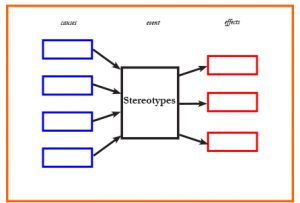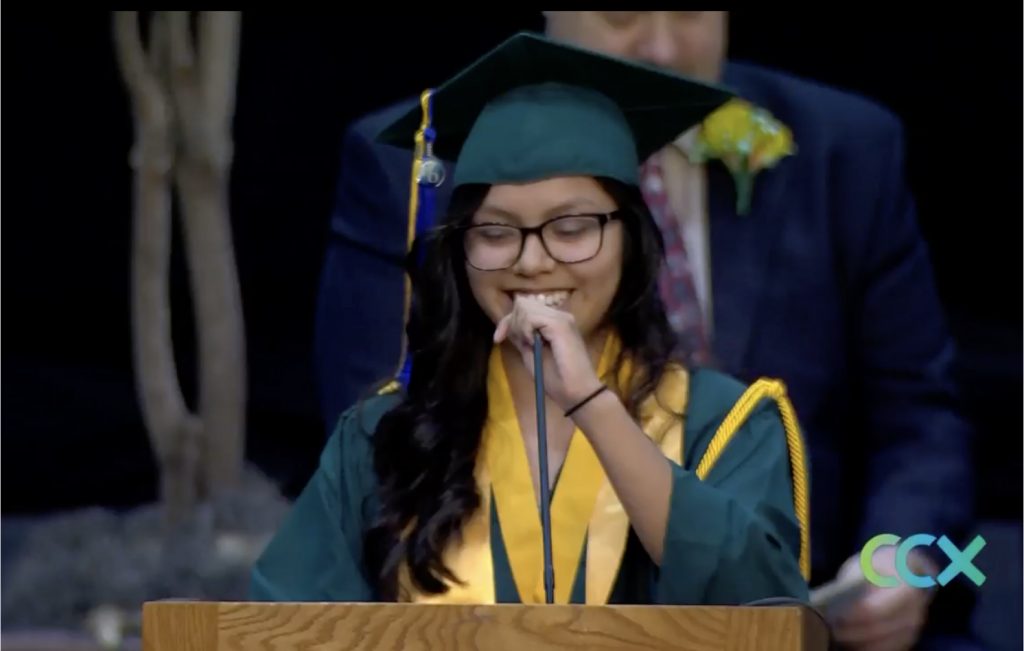LEARNING MODULE: The Continuing Drama of Disregarded Realities
The Pedagogy of Confidence is about taking Disregarded Realities and bringing them into view for understanding AND with actions for change with the Pedagogy of Confidence for all students. That is what this guide is about and guides you with.
- PowerPoint
- PDF file
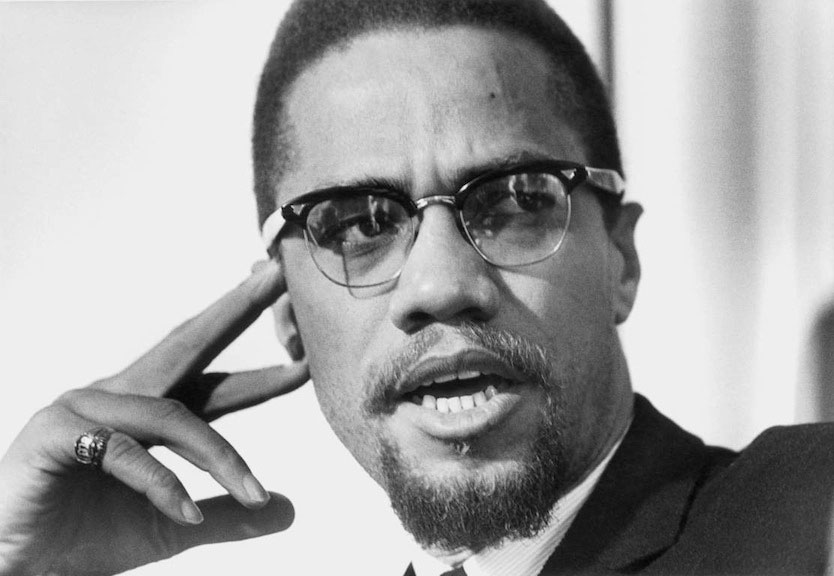
“You can’t separate peace from freedom because no one can be at peace unless he has his freedom”
—Malcolm X
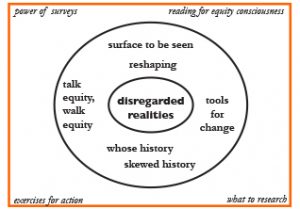 How we teach is who we are from our personal experiences and with whom we have learned from and with. We MUST recognize our set of relationships our geared to our personal world of experiences. We MUST learn to know what best helps us be a well balanced educator to teach students whose backgrounds differ from the majority of educators. It is possible with the Pedagogy of Confidence. A confidence of being open as a learner for change, a learner for understanding, and a learner for equity. This begins with belief for ALL students have a belonging to their potential.
How we teach is who we are from our personal experiences and with whom we have learned from and with. We MUST recognize our set of relationships our geared to our personal world of experiences. We MUST learn to know what best helps us be a well balanced educator to teach students whose backgrounds differ from the majority of educators. It is possible with the Pedagogy of Confidence. A confidence of being open as a learner for change, a learner for understanding, and a learner for equity. This begins with belief for ALL students have a belonging to their potential.
What we teach matters. How we teach matters. Whose history guides our teaching? Do you provide a balanced view of history? How do you learn and attain a balanced view of history? Are you open to differing perspectives? The Pedagogy of Confidence is about taking Disregarded Realities and bringing them into view for understanding AND with actions for change with the Pedagogy of Confidence for all students. That is what this guide is about and guides you with.
The Powerful Questions technique is used to build comprehension, inferential thinking, listening skills, understanding, and interest. Either an object or image are used as the focal point for questions. After the object or image have been revealed, the students initially observe the object or image, then share questions from their observations. This technique develops inquiry skills while enhancing observation abilities. It is important that no questions are answered during the exercise. Ultimately quality questions frame deeper understanding. The questions can be written down and then sorted into categories for inductive reasoning by the students to use with a shared inquiry discussion which is then an excellent step to discovering more on the topic.
Modeling
It is recommended that the process begins with the teacher modeling with one student doing Powerful Questions on the image. Continue with pairing up two students as a model for the class, then pair up all students. After 2-3 minutes, have students share to the whole class. Later in this sequence, the students can return to their questions, write them on individual papers for classifying inductively by similar questions.
A whole class sharing follows.
Powerful Questions with an image.
Virtually both in voice (model above) and in the Chat Feature. Post the image below in a place that all participants (and/or students) can see — online screen, poster and/or on a paper for small groups. Then model with you and one student doing Powerful Questions on the quote. Continue with pairing up two students as a model for the class, then pair up all students. After 2-3 minutes, have students share to the whole class. Later in this sequence, the students can return to their questions, write them on individual papers for classifying inductively by similar questions. Alternatively, the quote can be used concurrently with the image, or the image first, followed by the quote.
After doing Powerful Questions, the citations of the photo to the right, and accompanying text could be shared as part of the priming.
Powerful Questions Video Examples
Extension
Powerful Questions with the following quote that builds upon the above use of Powerful Questions with an image.
“Using Wiradjuri language on the cover of my novel makes a strong statement … regarding the reclamation and maintenance of the traditional language of my family.”
― Anita Heiss, Bila Yarrudhanggalangdhuray
![]() Key Academic Vocabulary Prediction
Key Academic Vocabulary Prediction
The purpose of sharing key vocabulary prior to reading a text and/or viewing a video clip is to develop an understanding and knowledge of particular vocabulary with the goal of creating dialogue that increases interest and understanding of what is to read and/or watched.
1. You (and your students) will be reading the introduction for the text An Indigenous Peoples’ History of the United States for Young People titled This Land. The selection of academic vocabulary from the text for the vocabulary prediction best includes vocabulary needing further defining, vocabulary that will spark deeper thought, and vocabulary that connects with your schema and the student’s schema.
2. Write the vocabulary on a board, as a slide in PowerPoint and/or on a paper for small groups. Possible ways of introducing include going over each word with input from the class in small groups or as a whole group in regards to meaning.
3. Have the students in small groups discuss what they think the text they will be reading is about from these key vocabulary. Have the small groups share to the whole group. The teacher / facilitator is ONLY a listener acknowledging all inputs.
4. Read the text together. It could be one paragraph at a time, or all then the following processing technique of Read-Talk-Map or Write. The purpose of Read Talk Write is to build listening and comprehension skills, hold all accountable and develop understanding the text.
| ancestors sacred objects indigenous America’s story colonizers | knowledge history citizens advanced technology | Post the words on the left on a slide deck (virtual or in the classroom) for all students to see together. |

This Land
Excerpt from An Indigenous Peoples’ History of the United States For Young People
‘Under the crust of that part of the earth called the United States of America are buried the bones, villages, fields, and sacred objects of the first people of that land—the people who are often called American Indians or Native Americans. Their descendants, also called Indigenous peoples, carry memories and stories of how the United States came to be the nation we know today. It is important to learn and know this history, but many people today lack that knowledge and understanding because of the way America’s story has been taught.
Like most people, Americans want to think well of themselves, their ancestors, their history, and what they and their leaders do. As advanced technology makes the experiences of Indigenous peoples around the world more readily available, it is necessary that Americans learn to think more completely and more critically about their own history, because it can help them be better citizens of the world. Part of that critical thinking involves recognition that “America” is a name given to two land masses by European colonizers. indigenous peoples had, and have, words for the land in their own languages.’
An Indigenous Peoples’ History of the United States For Young People
By Roxanne Dunbar-Ortizexcerpt – This Land, published 2019
Read Talk Map
The technique Read-Talk-Map/Write works across grade levels and content areas. The purpose includes comprehension, listening skills, presenting and processing what is read. More in depth information is on this website under Read-Talk-Map/Write. The steps involved include:
1. Students establish partnerships; decide who is A, who is B.
2. Everyone reads text individually and silently for 60 seconds (teacher times).
3. Students then turn over or close the text.
4. A (or B) students tell their partners what they read, talking for 60 seconds.
5. B (or A) students take their turn at talking for 60 seconds.
6. Students map and/or write individually what they learned, with their text still closed.
After reading the text, a quick Circle Map (Thinking Map®) would provide additional processing for the students. In the Circle Map the students will write (or draw) all they know about the text they just read.
To expand the thinking with evidences and connections (schema), use a frame of reference.
Stereotypes
Listen to the following audio selection Stereotypes.
After the first listen use a cause/effect Multi-Flow Map to process the discussion in small groups.
Stereotypes: Equity Consciousness for All
Listen to the audio selection Stereotypes excerpt two times. After the first listen use a cause/effect Multi-Flow Map to process the discussion in small groups.
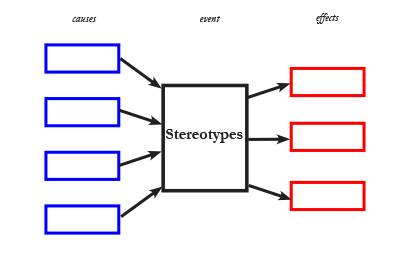
Second Listen
After starting the cause/effect map, have the participants listen to the audio a second time to process it further. Then continue adding to the above map before adding the frame of reference.
Frame of Reference
After the second listen in addition to adding additional causes/effects, also add in the frame of reference your personal experiences and schema (text, self, world).

Now watch the official video by Black Violin, and continue with your Visual Map.
How did watching this video impact your thinking? Your realities?
Add to the Cause / Effect Thinking Map on Stereotypes.
Continue with your first reactions and Powerful Questions for the image.
What is your schema that connects to the photograph (text to text, text to self, text to world)?
Watch the following video with the thinking about Frame of Reference and disregarded realities as part of your frame.
Gallery Walk
A gallery walk is when the whole class/group goes to each small group to learn from each other’s work. This can be done multiple ways including:
1. the whole group gathering around one small group at a time. The small group would present their work, the whole group then provides positive observations (affirmations) and questions. This continues with all small groups.
2. the small groups rotate around the class observing and taking notes from each other groups work.
A prediction, in a field where prediction is not possible,
is no more than a prejudice.
—Malcolm Gladwell
The passage below, Other Disregarded Realities from The Pedagogy of Confidence, would be best explored with a couple of processing strategies that were used earlier in this module. They are:
First, read the Albert Einstein quote and share in small groups, then the large group Powerful Questions on the quote.
“No problem can be solved from the same level of consciousness that created it.”
—Albert Einstein
After the participants read the passage about The Continuing Drama of Disregarded Realities: Ignored Consequences Reiterated, they would then do a variation on Read-Talk-Write that would be Read-Talk-Powerful Questions in pairs. After doing the Read and Talk, the would do the second part with developing Powerful Questions in pairs in response the article they just read.
Pedagogy of Confidence
The Continuing Drama of Disregarded Realities
Ignored Consequences Reiterated
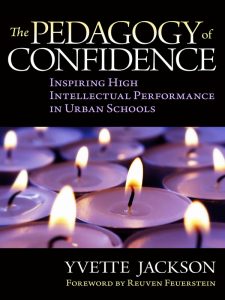 I do not believe that all of the policymakers and educators who supported what has transmuted into the marginalizing control of programs generated from Title I and NCLB were driven by prejudging based on race. I believe that many honestly had good intentions. However, a question posed rhetorically two decades ago by the distinguished cognitive psychologist Asa Hilliard (and responded to with silence from the powers that be) must be asked again: “With all the good intentions and stipulations, why is there still not a systematic practice or pedagogy aimed at developing high intellectual performance in all students instead of instilling marginalizing practices for students of color, especially those in urban areas?” (Hilliard, 1991/1995). The type of pedagogy that is needed, which Dr. Hilliard inspired me to develop, is the Pedagogy of Confidence: the artful use of the science of learning to generate High Operational Practices that empower and support students and teachers to fearlessly pursue demonstrations of high intellectual performance that can lead to self-directed learning and self-actualization. The Pedagogy of Confidence, like the gifted-type education it reflects, could be an advantageous systematic practice, but such pedagogy has not yet been sanctioned as a systematic response for underachieving school-dependent students. The reason is most eloquently captured in the words of Albert Einstein: “No problem can be solved from the same level of consciousness that created it.”
I do not believe that all of the policymakers and educators who supported what has transmuted into the marginalizing control of programs generated from Title I and NCLB were driven by prejudging based on race. I believe that many honestly had good intentions. However, a question posed rhetorically two decades ago by the distinguished cognitive psychologist Asa Hilliard (and responded to with silence from the powers that be) must be asked again: “With all the good intentions and stipulations, why is there still not a systematic practice or pedagogy aimed at developing high intellectual performance in all students instead of instilling marginalizing practices for students of color, especially those in urban areas?” (Hilliard, 1991/1995). The type of pedagogy that is needed, which Dr. Hilliard inspired me to develop, is the Pedagogy of Confidence: the artful use of the science of learning to generate High Operational Practices that empower and support students and teachers to fearlessly pursue demonstrations of high intellectual performance that can lead to self-directed learning and self-actualization. The Pedagogy of Confidence, like the gifted-type education it reflects, could be an advantageous systematic practice, but such pedagogy has not yet been sanctioned as a systematic response for underachieving school-dependent students. The reason is most eloquently captured in the words of Albert Einstein: “No problem can be solved from the same level of consciousness that created it.”
Jackson, Yvette. The Pedagogy of Confidence: Inspiring High Intellectual Performance in Urban Schools (pp. 45-46). Teachers College Press. Kindle Edition.
After the discussion from Read-Talk-Write, revisit the quote below from the passage and share your questions for response to:
“With all the good intentions and stipulations, why is there still not a systematic practice or pedagogy aimed at developing high intellectual performance in all students instead of instilling marginalizing practices for students of color, especially those in urban areas?”
—Asa Hilliard
 Close this module with a brief written reflection on how you will impact your school for developing high intellectual performance for all students.
Close this module with a brief written reflection on how you will impact your school for developing high intellectual performance for all students.







